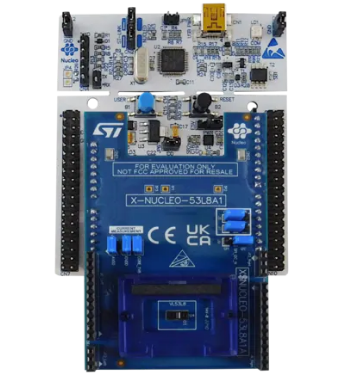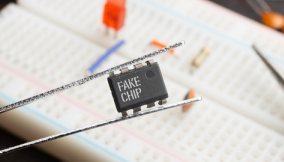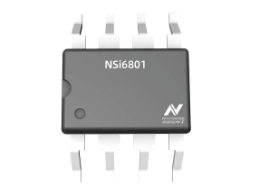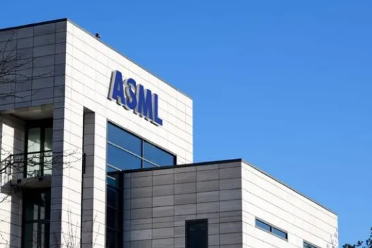- Ameya360 Component Supply Platform >
- Trade news >
- AMEYA360:ST P-NUCLEO-53L8A1 Sensor Evaluation Kit
AMEYA360:ST P-NUCLEO-53L8A1 Sensor Evaluation Kit
STMicroelectronics P-NUCLEO-53L8A1 Sensor Evaluation Kit is a completed evaluation kit that allows the user to learn, evaluate, and develop applications using the different commercial products of the VL53L8 series Time-of-Flight sensors. The VL53L8CX is an 8x8 multizone, ToF ranging sensor, which enhances performance under ambient light with reduced power consumption.

Based on STMicroelectronics FlightSense technology, the sensor is designed to provide accurate ranging up to 400 cm with a 65° diagonal FoV. The NUCLEO-F401RE STM32 Nucleo development board provides an affordable and flexible way for users to try out new ideas and build prototypes with any STM32 microcontroller, choosing from the various combinations of performance, power consumption, and features.
FEATURES:
X-NUCLEO-53L8A1 Time-of-Flight expansion board based on the VL53L8 series for STM32 Nucleo
NUCLEO-F401RE development board
0.25, 0.5, and 1mm spacers to simulate air gaps
One cover glass to protect the sensor from the dust
Equipped with Arduino UNO R3 connectors
Full system software supplied, including code examples and a graphical user interface
RoHS, CE, UKCA, and China RoHS compliant
Online messageinquiry

AMEYA360:Avnet Fiscal Q3 Sales Up 0.4%
- Week of hot material
- Material in short supply seckilling
| model | brand | Quote |
|---|---|---|
| TL431ACLPR | Texas Instruments | |
| MC33074DR2G | onsemi | |
| BD71847AMWV-E2 | ROHM Semiconductor | |
| CDZVT2R20B | ROHM Semiconductor | |
| RB751G-40T2R | ROHM Semiconductor |
| model | brand | To snap up |
|---|---|---|
| BP3621 | ROHM Semiconductor | |
| ESR03EZPJ151 | ROHM Semiconductor | |
| STM32F429IGT6 | STMicroelectronics | |
| IPZ40N04S5L4R8ATMA1 | Infineon Technologies | |
| TPS63050YFFR | Texas Instruments | |
| BU33JA2MNVX-CTL | ROHM Semiconductor |
- Week of ranking
- Month ranking
Qr code of ameya360 official account
Identify TWO-DIMENSIONAL code, you can pay attention to

























